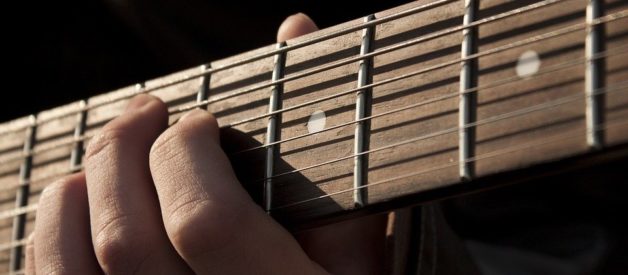You can play a lot of music on the guitar, from simple love songs to heavy metal songs. It is one of the most versatile instruments ever invented and is very easy to play! You only need to master the basics of the guitar to make it work, it may take a lot of hard work to know all the basics and you may need to have formal instructions to fully understand the potential of the instrument.
You can play a lot of music on the guitar, from simple love songs to heavy metal songs.
It is one of the most versatile instruments ever invented and is very easy to play! You only need to master the basics of the guitar to make it work. Although, it may take a lot of hard work to know all the basics and you may need to have formal instructions to fully understand the potential of the instrument.
Before you get excited about hitting your guitar, you really need to learn some basic guitar terms and parts you need to know to get on with the lesson.
String. The regular guitar has six strings.
They come in different sizes and note grades as well. In a typical tuning, the first string, which is found at the bottom (the thinnest and highest sound among the six), is the E note. The next string (thicker than the first and the sound lower) is the B note. The third string up is the G note. The next string is D, the 5th string is A and the last string which is the thickest and lowest sound and the one closest to your body is another E. When in tune, the 1st and 6th strings must produce the same note but different notes.
Frets. If the strings divide the guitar from left to right, the fret is a small metal strip that divides the instrument into sections from top to bottom. Some guitarists will describe this as the space in the neck between each strip of metal. Therefore, the 2nd fret will refer to the second gap between the frets found in the neck rather than the actual second piece of metal. Placing your fingers on the strings between the two frets can allow you to play the notes. The higher the frets you get, the higher the voice note. Lastly, each fret is half a step higher than the previous one.
Other terms to remember:
Headstock. This is the very top of the instrument where the tuning pegs are located.
Nuts. A small piece of material that can be found at the junction of the headstock and neck. You can find small, carved grooves to guide guitar strings to their tuning pegs.
Neck. This is the long, slender section of the guitar that holds the frets and strings. This is where you place your fingers to play individual notes or to create chords.
Body. This is the large base of the guitar that attaches to the neck. The body of the guitar is different with each type. For example, an acoustic guitar usually has a sow out of the body, with a circular sound hole in the center to project the sound of the instrument. On the other hand, the body of the electric guitar has “ýýpick ups’ instead of sound holes to capture and project the sound of the strings being played.
Key Tuning. Keeps the strings in place and allows you to adjust the tone of the strings by turning the pegs
Bridge. This is a small piece of hardware used to anchor the strings at the base of the body
Knowing these basic terms will help you through your studies. So, get your guitar ready and let the jamming begin.
